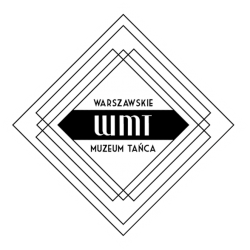The Warsaw Museum of Dance is a project presenting the body of work of the Pioneers of Modern Dance in Warsaw during the years 1918-1939. This work is interpreted by dancers and choreographers currently working in the capital, including Gosia Gajdemska, Artur Grabarczyk, Bartosz Ostrowski and Iwona Wojnicka. This project, by an artist collective Format Zero, encourages Warsaw residents to discover the city’s history and identify through the lenses of dance.
During the interwar period, Warsaw was at the center of attention of the European dance community. The capita hosted the Choreography Competition in 1933 where the biggest names of the dance world came together and the jury included among others Rudolf Laban. Pola Nireńska took second place in the competition. As a reminder, the dancer was an alumni of the Mary Wigman school who later moved to Washington DC (privately, she was married to Jan Karski). Nireńska danced in two shows of the Eurythmics and Arts School led by Janina Mieczyńska. At the time, the School of Ear Training was run by Tacjanna Wysocka. The famous ballet dancer, Feliks Parnell counts among the artists who created during this period. These four, distinguished individuals, their choreography and style of dancing are the source material and inspiration for the dance study performed by the contemporary Warsaw dancers.
The European context of the Pioneers of Modern Dance was predominantly shaped by such unforgettable revolutionaries as Rudolf Laban, Mary Wigman, Kurt Jooss and Émile Jaques-Dalcroze. Laban showed the world that the body is three dimensional and that dance can also be like this. Mary Wigman proved that the foundation of ballet is not a necessity and that self expression is an essential part of dance. Kurt Jones, with his show, The Green Table, from 1932 changed the perception of dance by showing a choreography that had war as its subject matter. Delcroze developed his own system of exercising, treating the body as the most important musical instrument. During this time, dancers from Warsaw won accolades at presentations and festivals of Modern Dance across Europe.
The dance project, Warsaw Museum, is a unique offer on the cultural map of the city utilizing and appealing concept of popularize the history and knowledge about the art of dance. The project places Warsaw on the list of cities where dance is perceived as a cultural good and as an integral part of the identity of the capitol’s residents. There are many people passionate about dance in Warsaw, and there are many schools, initiatives and packed dance rooms, but this passion for dance does not inspire familiarity with the recent history of Polish dance. The Warsaw Dance Museum aims to bring the spotlight back on the famous individuals whose work was recognized everywhere in Europe during the interwar period.
The Warsaw Dance Museum is inspired by Musee de la danse by the amazing choreographer Boris Charmatz.
